Sub Focus and Wilkinson: "We just wanted to do something with a bit more depth and ambition”
As they prepare to release their new album, Portals, Mark Wilkinson and Nick Douwma discuss recording it at Peter Gabriel's Real World Studios
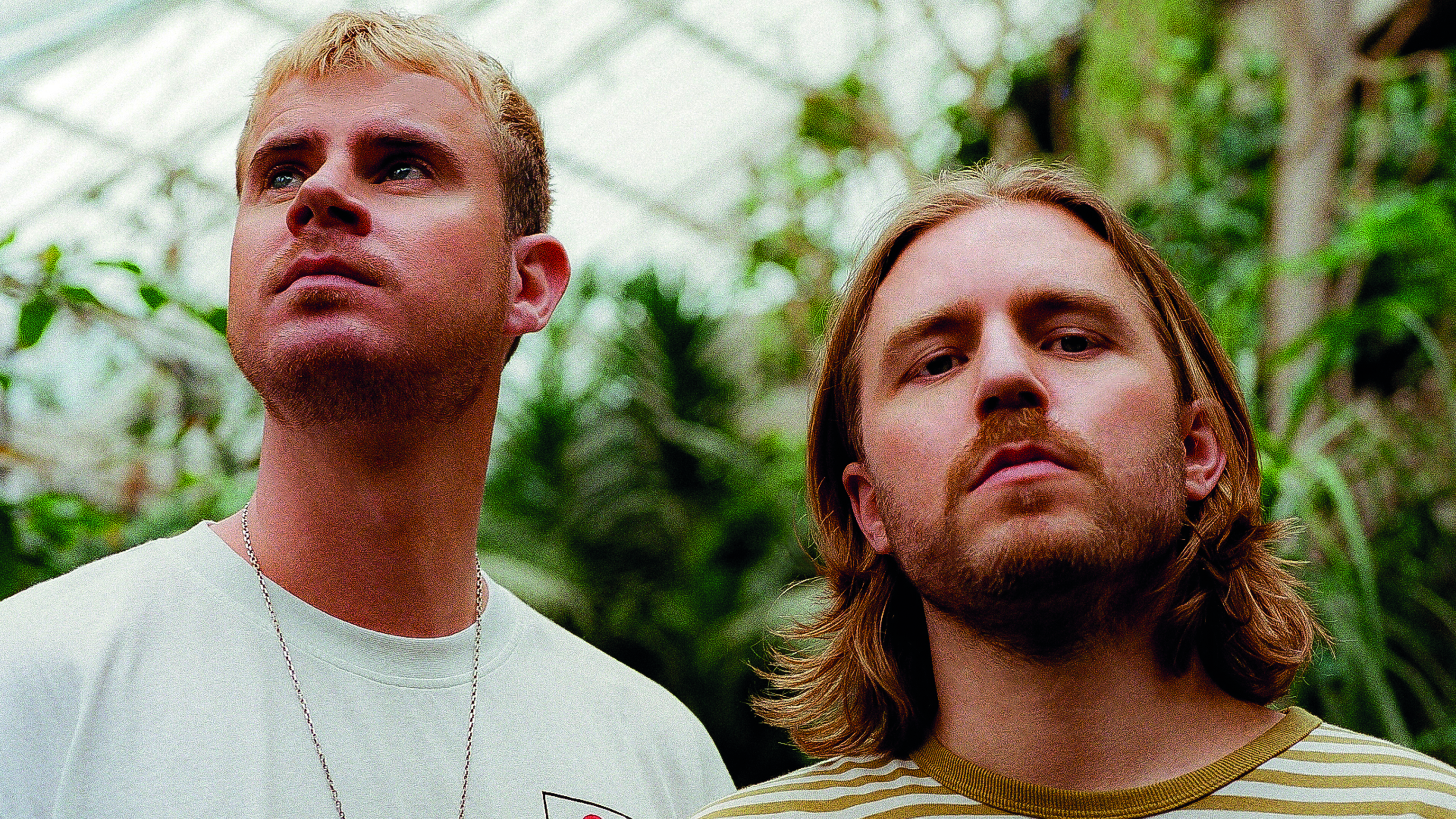
Sharing the billing on many a DJ festival, having both signed to Andy C’s RAM Records, drum & bass heavyweights Sub Focus (Nick Douwma) and Wilkinson (Mark Wilkinson) decided to combine talents in 2017 and release the single Take It Up, leading to the debut long player Illuminate, now streamed seven million times.
Following the album’s success, the duo decided to take the project in a more expansive and experimental direction. With a desire to record ‘real’ instruments and work with a select team of vocalists, producers and session players, Douwma and Wilkinson hired Peter Gabriel’s Real World Studios in Wiltshire. The result is the single Just Hold On, taken from the upcoming album Portals.
How did you guys first meet? We’d imagine your paths would cross quite often?
ND: “I can’t actually remember the first time we met, but it was almost certainly at a gig somewhere. It may have been after one of the EDC festivals in Las Vegas. We both came up on the same label, RAM Records, so we had a kinship through that.”
MW: “I’ve always looked up to Nick and his productions. When I signed to RAM I remember Andy C telling me that was the level of sonics I had to get up to. We started seeing more of each other and eventually got in the studio in 2017.”
ND: “The response to us linking up seemed to be really positive after we made a track called Take It Up. Then we decided to extend the collaboration into a more long form project.”
What initially sparked the collaboration?
Want all the hottest music and gear news, reviews, deals, features and more, direct to your inbox? Sign up here.
ND: “Mark had worked with Dimension on a track called Rush, then I ended up working with Dimension on a track. Everybody had started to open up a bit more on the scene. Before that, there was definitely a certain reluctance to collaborate. It’s so beneficial because, having both been solo producers for a long time, it’s been refreshing to bounce off somebody else for a change.”
MW: “Nick and I got in the studio and saw where we could push things together, especially with this new album. We talked a lot before committing and even thought about doing something completely different. At the very least we wanted to create an album that wasn’t what we’d usually do - more of a listening album that could be played at home or in the car, not just club-orientated.”
We just wanted to do something with a bit more depth and ambition.
ND: “We’re both fans of electronic acts that bridge that gap – Bonobo, Moderat and Jon Hopkins are all producers whose work we really like. We wanted to emulate albums that are dance music but have those live or more cerebral elements that are sometimes missing when you do lots of club-orientated single releases. We just wanted to do something with a bit more depth and ambition.”
For successful collaboration there needs to be diplomacy on both sides. Did you find that?
MW: “It’s an amazing experience to be able to confidently step away from a desk knowing that someone like Nick can go down that hole for an hour and there will be something cool at the end of it. When you’re on your own you can mess about with an idea for five hours, but when you’re collaborating you have to learn to let the other producer go on that journey uninterrupted without jumping in until they’ve seen the idea through.”
ND: “You need to be able to read the person’s body language and learn that when they’re onto a good thing you give them the space to do that. It’s great when you’re stuck on a song, too. As anyone who does music production knows, there’s a lot of endlessly listening to things on loop and as that goes on you do lose perspective a bit. We’ve both got pretty high standards and I guess there was a learning curve in surrendering a certain amount of autonomy on songs as we’re both used to making the final call.”
What was behind your choice to use Peter Gabriel’s Real World Studios for this project?
MW: “The idea of doing a writing retreat was on the top of the cards really. We both have a certain amount of outboard gear, but the idea was to really step out of the computer into a studio and record things in a different way. The most important thing is that we did it for us – we wanted to make a listening album that we could be really proud of, and we feel we’ve achieved that.”
Was the fact that Peter Gabriel owns the studio appealing in itself?
ND: “We discussed using a few different studios abroad but thought it would be much easier to collaborate with people in the same country. I’d always thought it would be an amazing place to work. Peter Gabriel has a real background in world music so there are tons of different instruments and microphones there, and a key part was that we could stay in the living quarters and write intensely.”
So you’re in Real World; how did you settle in the first few days?
MW: “For the initial creative side we were jamming and coming up with many different creative processes whether using different instruments, writers or vocalists. We then took those productions away and decided which we’d take the lead on. Nick works on Ableton and I used to work on Logic, so I switched over, which helped the process as trying to work between two DAWs would have been a nightmare.
"We had to sync the plugins we used, which was really cool for discovering new ones, and by the end we pretty much had the same systems. We also shared a Dropbox folder to save the newest versions of songs, although we couldn’t work on them at the same time as it would end up crashing.”
ND: “At Real World we would often use Live to sync the tempo of our two projects using Ableton Link. For example, a beat could be coming from Mark’s Ableton project and the chords from mine, but we’d have to join the projects together after. I like the way you can browse tracks and drag them into whatever you’re working on in Ableton. I’d often take whole sections and assimilate them into other ones, so we definitely got a lot from using the same DAW.”
Presumably, there’s an engineering team at Real World to give you guidance?
ND: “With a studio of that size you do have to have assistance and the head engineer Oli Jacobs helped us record while we were there.
"The room was a bit of a blank canvas at first. Mark plays drums so we miked up a drum station towards the back of the room and I’d brought my modular synth so I set that up to my left. We basically surrounded ourselves in a circle of instruments that we wanted to use with us in the middle.”
MW: “One of the things Peter Gabriel says to his engineers is that the creative process should flow and there shouldn’t be any time spent waiting for something to be miked up. Then you’ve obviously got all the outboard effects units and processing connected to the SSL desk, which is massive. Thankfully there was someone there who knew their way around that.”
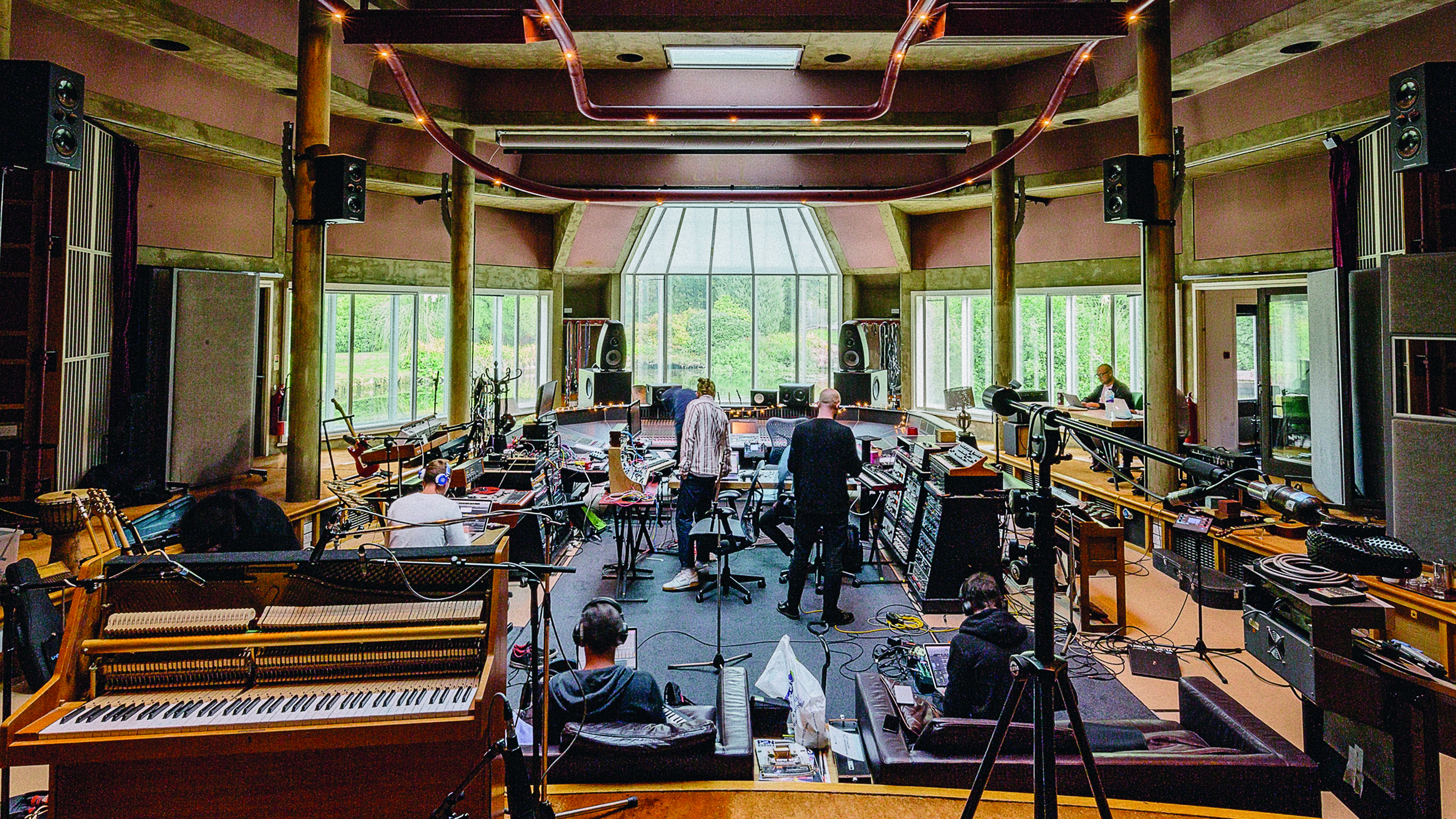
Did you have any demos developed prior to jamming out material?
ND: “We had a couple of ideas that we’d started in advance of the sessions. We ended up adding live elements to the bones of our first single from the project Illuminate, but most of the original material was written at Real World.”
MW: “We basically had the first day to ourselves to get our heads around the studio and have a little play about. We came up with a few ideas there and then and had other songwriters come in throughout the week, which was amazing because you’re then in a position where they can have lots of input on different tracks.
"By day three, we ended up renting another production studio within the complex so that Nick and I could split off to develop ideas further. It became a writing camp, with one track written in the main room and perhaps an idea to get vocals down in the other studio.”
Could you give an example of a track that was realised through collaboration with others?
ND: “On the sessions, the main people we worked with were Mark’s live guitarist Tom Varrall, a producer called John Calvert and a vocalist and songwriter Tom Havelock, who we’ve both worked with before.
"We’re also big fans of house producers Icarus and ended up jamming with them a few days into the sessions. That’s how the current single Just Hold On came about. Mark (Wilkinson) is a drummer so we recorded some breakbeats with him into the studio’s reel-to-reel tape machine and re-pitched them to create drum samples. We then gave those breakbeats to Icarus who chopped up them up, layered them and added some pads and chords.
"I was really into the idea of using the modular on that track so I created some long passes of bleepy synth melodies and chopped them up to find the best bits in the takes. I used the Intellijel Metropolis sequencer, which allows you to reverse or randomise the steps and is amazing for creating melodies that change and morph in interesting ways.
"The track was initially written and recorded with a male vocal from Tom Havelock with a view to having it re-sung with a female vocalist later. We re-recorded it with Vula Malinga from Basement Jaxx after the Real World sessions finished.”
It sounds like you had very fluid writing sessions. Was that born out of necessity?
ND: “Most of the material we ended up taking away was written within a 48-hour period during the middle of the week, so that was an incredibly productive couple of days.
"One evening we met a cellist called Andrew Morgan who was recording in an adjacent studio. We really wanted string parts for Just Hold On and another track, so we managed to convince him to come in and track strings. That was one of the best moments of the week; it came out of nowhere and we were suddenly sitting in a silent studio with him playing an amazing solo cello.”
MW: “We basically got the content then used Real World to get all the magic and sounds that we knew would form that original layer to the music. We also knew that when it came to getting all the drum & bass sonics into the sound we’d need to spend time at our own studios which we’re used to mixing in.”
ND: "When we left Real World we were so pumped because we could see that the outline of the record was there and it was just a case of producing everything up. The tricky thing about D&B is that the standard of engineering is very high, so we were trying to find a happy mid-spot with a lot of the songs. We want to get them to sound live but also big enough to work in one of our sets without being brutally over-processed or quantised.”
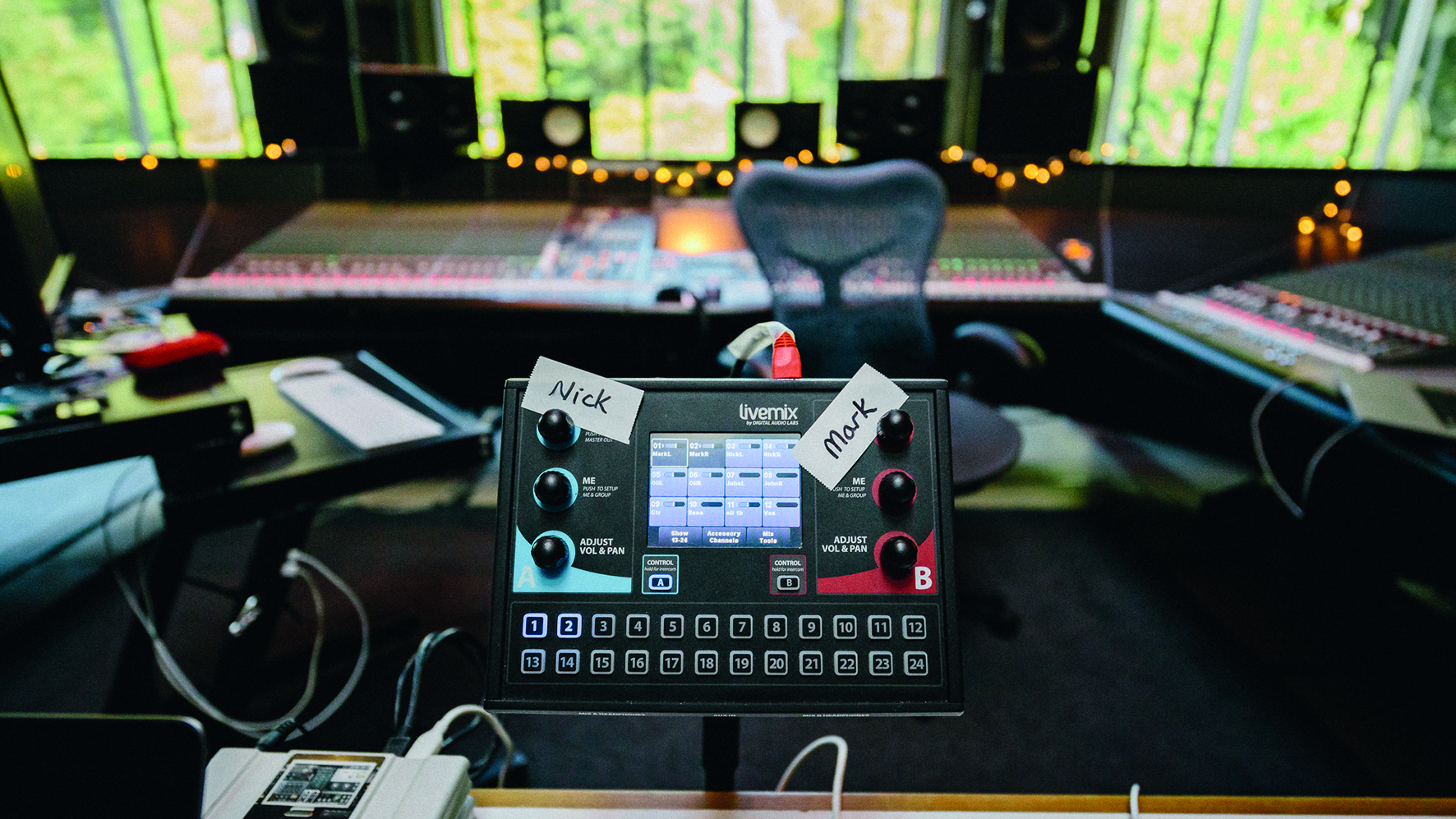
Drum & bass is a very digitally savvy genre and where a lot of electronic music’s innovation comes from. Can you pinpoint what Real World brought in contrast to that?
ND: “Recording real instruments brings a whole other dimension, especially to piano and string parts. It’s difficult to create totally realistic approximations of real instruments. Strings and brass are notoriously hard to recreate in a software sampler, so some of them just needed to be recorded with real instruments for ultimate realism.”
MW: “We soon realised that you just couldn’t make those strings on our computer – they added so much emotion. We were buzzing because that sound was so unique and different to what we were used to.
"I’ve often used Kontakt’s Alicia Keys piano, but recording in Real World on a piano that Alicia Keys actually used was unbelievable. The sound of the room has something to do with it in a way - the natural reverb and acoustic treatment is what turns it into a sculpture.”
What other exotic gear did you use while you were there?
ND: “We used a binaural head mic for some of the string recordings. It’s a microphone shaped like a head with two in-ear pickups. We also used an instrument called a Marxophone, which is a really old Victorian instrument. It looks like a table-top harp with hammers you can hit the strings with.”
MW: “We also recorded grand piano for our next single Air I Breathe. As mentioned, it was the actual piano Alicia Keys recorded her latest album on.”
Did you make good use of the SSL desk?
ND: "We used the desk quite often to mix stuff we were recording, like the drum kit and piano. We both had outputs from our laptops but also our own stereo inputs, so did most of the processing of live instruments via the SSL desk and outboard gear.”
MW: “We’d either get Oli to record bits that felt better multi-tracked, or if it was more of a stereo send we’d get it onto our laptops straightaway. We both came with portable sound cards, so sometimes we’d record through a chain on the desk straight into Ableton, or for something bigger, like drums, we’d record to Pro Tools and retrieve the files.”
ND: “When you’re writing in the computer and using soft synths, it’s so easy to switch sounds that there’s inevitably a lack of commitment, but once you’ve recorded a drum beat, processed it through an SSL desk and put it to tape, you’re committed to it and wouldn’t then switch it out for another breakbeat because you’ve put love and sweat into that decision.”
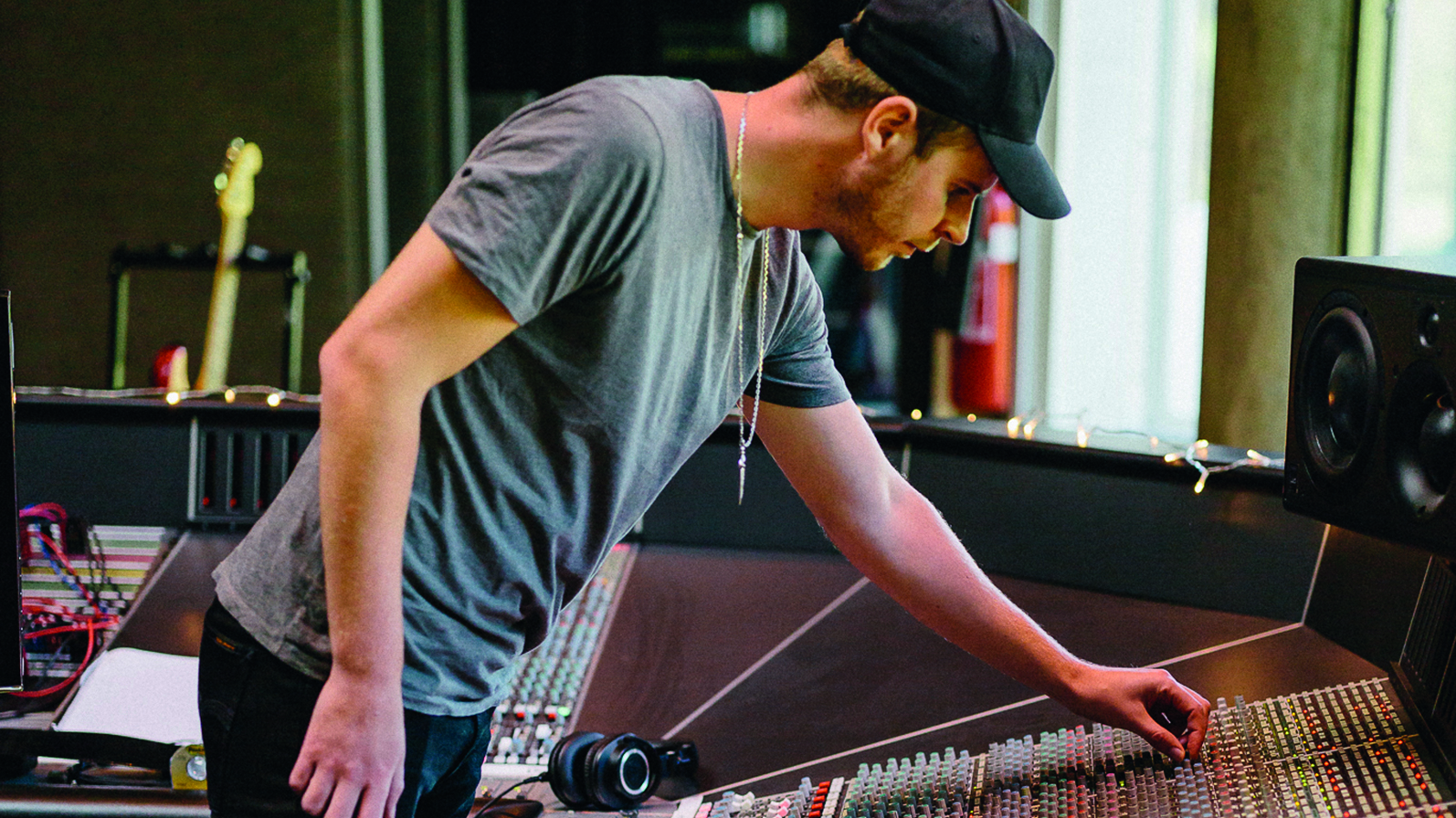
Nick, last time we visited your studio you didn’t have any modular. How is it affecting how you produce these days?
ND: “Since the last time we spoke, my studio has changed from being very sparse to having quite a bit of outboard.
"I got into modular a few years ago and a few modules definitely inspired some of the sounds on the album. Some of the processes also inspire me to do stuff within software later, like randomisation of melodies.
"One technique I like using is to put scale quantisers or Auto-Tune on synth melodies, because you get these weird bends and glides in them.
"Another technique in software we used throughout the record was making a stack of vocals or synth chords and putting them into Paul Stretch to create these slow, evolving chord beds. It basically allows you to create very long pad versions of whatever sound you put into it and these would often form the starting points for tracks.”
What’s your modular setup specifically?
ND: “It’s basically a 12U setup with four rows of Eurorack. The main things I used on Just Hold On were the Intellijel Metropolis, which I used as a sequencer going into the Intellijel Atlantis synth - an SH-101 clone.
"I kept things pretty dry going into the computer so I could add effects later, but I quite often use a Valhalla Shimmer and reverb in the modular to add some really nice harmonics to the sound. I use the Make Noise Morphagene a little too, which is a granular sampler.”
MW: “I love the modular concept, but I know it’s a money hole I shouldn’t really get into, especially when I look at what Flux Pavilion’s done with his modular setup [laughs]. I did recently buy a Moog Grandmother, so I’m going to stick with that for a bit. I’ve also got a Prophet-6 and a Sub 37 and do think the sound is so much bigger.
"I moved studios recently and I’m trying to use more outboard because you get something that you can’t with soft synths. They add so much character and creative possibilities, and the sound quality is much better - it’s not just an algorithm, it’s actually doing something real.”
Talking of added character, what outboard were you using at Real World?
MW: “A lot of the stuff was going through the LA2A compressor and as soon as I left Real World I went and bought a Culture Vulture because you get so much more volume and character by driving things through it. We also used the tape machine a lot and the Eventide Harmonizer. They had a Leslie speaker that spun around in a box to give a really fast phasing effect – we ran a bass through it and it made some mad sounds.”
Did Covid-19 affect the project?
ND: “We were getting close to finishing the album in our studios when lockdown hit, so we ended up finishing it remotely. We did quite a lot of remote vocal sessions with singers on Zoom and had WhatsApp group chats with singers sending us voice note ideas. That was quite an interesting change to our process because we had to adapt our working methods quite quickly.”
MW: “Essentially, the whole process of making this album has been completely different to what we’re used to. We’re used to being able to test final mixdowns in clubs, so had to commit to a few that hadn’t been ‘road tested’.”
The whole process of making this album has been completely different to what we’re used to.
ND: “While it’s been a trying time for everybody, the timing of it has been quite good for us in some ways. We’re normally DJing all over the place but suddenly have no gigs in our diary so all we’ve done in the last few months is finish the record. Not having been influenced by playing this stuff out, we’ve been able to think about it from much more of a home listening perspective, which is what we set out to do in the first place.”
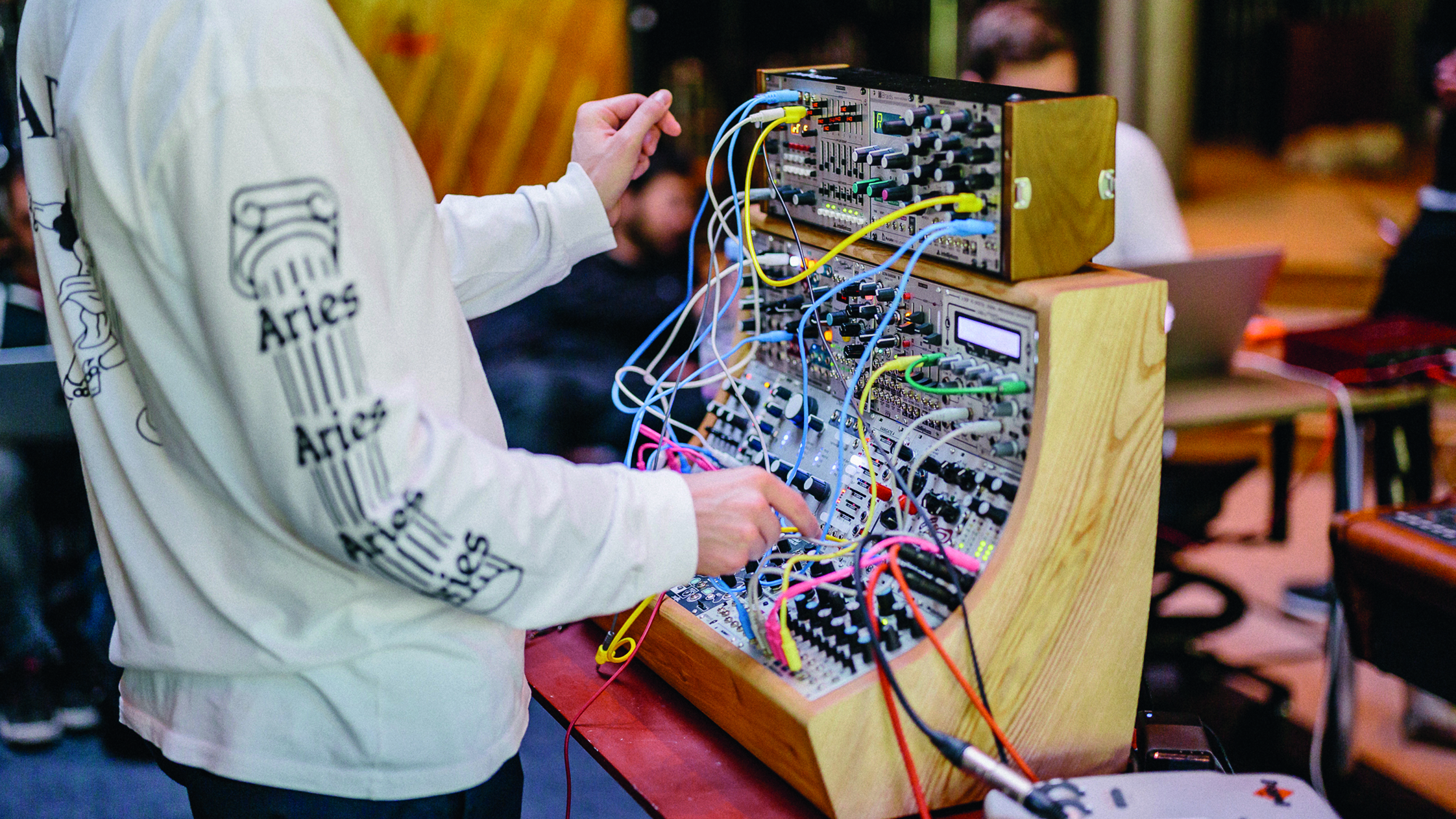
Sub Focus
Eurorack modular system
“The Intellijell Metropolis, Atlantis and uScale modules were the central elements to the patch used on the lead to Just Hold On. We also used the physical modelling synth module Rings from Mutable Instruments on the track Alone.”
UAD Arrow audio interface
“When I do remote sessions outside the studio, this comes along with me.”
Neumann mics
“We used the KU-10 binaural head mic while recording cello and u87/u47s on all the vocal recordings.”
Fender Precision bass
“Bass guitar is my first instrument; it was fun to pick this up at RW.”
Marxophone
“We used this for all the lead melody elements on Enter Night.”
Wilkinson
Yamaha C3 Grand Piano
“Along with the sonics of the ‘Big Room’ at Real World, it makes for a super-rich sound.”
Thermionic Culture Vulture
“An amazing distortion unit that adds character to any stems without being driven.”
Neumann U47
“I bought the vintage remake of this incredibly versatile mic and we used it to record the vocals on tracks like Freedom, In Bloom and Alone.”
Do you think your signature styles have carried through to the end product?
ND: “There are definitely tunes where I can hear Mark’s style, and while it’s quite different to what we normally do there are tracks that will sound very familiar to our fans. After this process I want to do more ambitious long form projects. Being forced to take the time off has been great because there’s always a danger of constantly doing gigs and not having enough time to write music.”
MW: “You’re DJing around the world every weekend - dealing with listening to really loud music, getting on a plane with your ears popping, and on a Monday you’re knackered but need to write music. That’s actually super difficult. Outside of DJ culture, musicians take time off to write music and that’s definitely something I’ll think about in the future so I can get into the zone without being pulled away from the studio all the time.”
ND: “I often think about a lot of the drum & bass producers who came up in the ’90s like Photek and Dillinja. They didn’t DJ much because they could make a living as a musician without having to tour. If you think about the amount those artists did for the progression of the genre, having that balance has got to be an important thing to think about.”
Having spent this time at Real World, have you created a level of expectation for yourself that you might now struggle to meet?
ND: “Different venues suit different projects, so I think the idea of going to a writing retreat to find new inspiration is a really good one and I’m sure there are other places we can go to get that.”
MW: “I now feel that music is more than having a vocalist or producer come into my studio. I’d like to travel the world, meet new people and get ideas from different places. Before Real World, I didn’t really realise how the place where you write music is so important or influential to the sound.”
ND: “It would be kind of weird going back to Real World in a way. We have so many good memories from those sessions and you don’t want to force the magic to happen again, but I’m sure we’ll go back there again one day.”


Future Music is the number one magazine for today's producers. Packed with technique and technology we'll help you make great new music. All-access artist interviews, in-depth gear reviews, essential production tutorials and much more. Every marvellous monthly edition features reliable reviews of the latest and greatest hardware and software technology and techniques, unparalleled advice, in-depth interviews, sensational free samples and so much more to improve the experience and outcome of your music-making.
